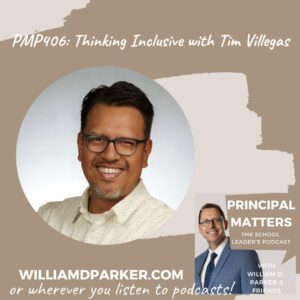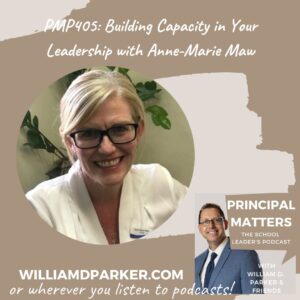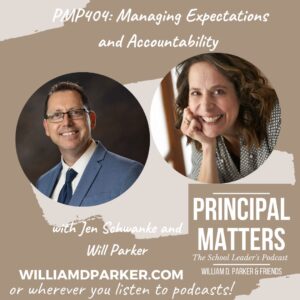Podcast: Play in new window | Download
My mother-in-law has Alzheimer’s. The condition began about ten years ago when we thought she was simply becoming more forgetful.

But as her short-term memory declined, we realized she wasn’t just suffering from old age. Over the years, she has lost the ability to recognize her own children and grandchildren, and she forgets whether or not her parents are still living–even though they passed away more than thirty years ago.
Music and the Brain
On Sunday afternoons, we like to take our children to visit Grandma at the memory care center where she now lives. We keep an electronic piano in her room because she has loves playing and singing hymns. When I visit, I sit at the keys and open a hymnal. As soon as my fingers touch the keys, Grandma joins in and doesn’t miss a beat. She remembers the tunes and words of all her favorite songs. “Amazing Grace, how sweet the sound…” We will sing one song and then another.
I’m not a brain scientist, but I have studied learning styles and child development, and memorization is often easiest when combined with music. It works for children, adults, and apparently for my mother-in-law with Alzheimer’s too. Research confirms that it is also good practice for brain engagement.
My Daughter’s Playlist
Occasionally, my daughter Katie and I will drive over together to see Grandma. Katie is a freshman in high school and she has a great playlist on her iPhone. She tags them with different titles, but one she calls “Dad’s Playlist.” It is a compilation of mostly acoustic or musical numbers.
On our drives over, we turn up the volume in my car and sing along. One of my favorite duets is one from the musical Greatest Showman with Zac Efron and Zendaya singing “Rewrite the Stars.”
What if we rewrite the stars?
Say you were made to be mine
Nothing could keep us apart
You’d be the one I was meant to find…
As fun as it is to connect with my family through music, I would like to ask you a question about your own playlist–not just the songs or music you enjoy, but what is on your mental-playlist?
Our brains are powerful organs. And just as digesting nutritious food tends toward better health, what you digest with mind shapes your view of yourself, the world around you and forms life-long habits and memories. In a world of constant access to technology, advertisements, news, and information, our brains encounter stimuli at alarming rates.
In an article by FastCompany.com, Daneil J. Levitin, shares the following:
“Information scientists have quantified [that in] 2011, Americans took in five times as much information every day as they did in 1986—the equivalent of 174 newspapers. During our leisure time, not counting work, each of us processes 34 gigabytes, or 100,000 words, every day. The world’s 21,274 television stations produce 85,000 hours of original programming every day as we watch an average of five hours of television daily, the equivalent of 20 gigabytes of audio-video images. That’s not counting YouTube, which uploads 6,000 hours of video every hour. And computer gaming? It consumes more bytes than all other media put together, including DVDs, TV, books, magazines, and the Internet (Levitin).”
So how do you ensure that the intake for your brain is as healthy as what you digest with your body? Frankly, if you want to keep growing in your own critical thinking and reasoning, you must be proactive in what’s in your own mental playlist. As I’ve shared before in this series (you can see previous shares in PMP:111 and PMP:112), my suggestions are not prescriptive. But here are some suggestions from one veteran school leader to others:
Four areas to reflect on as you regulate your own information intake:
1. Your Mindset
A lot of education research has been shared in recent years on the power of keeping a learning mindset. Carol Dweck shares some powerful takeaways in her great book, Mindset: The New Psychology of Success.
Resist change, refuse to innovate, look at obstacles and give up–these are recipes for lack of growth. Not only do we need to encourage environments of risk-taking and experimentation for our students and teachers, we also need to practice those habits for ourselves. One way to do this is by simply being mindful throughout each day.
Mindfulness has also become a buzz word of late. It is an important way for many people to guide their thoughts, practice meditation, or increase stress-relief. Although those are healthy practices, when I talk about being mindful, I’m simply talking about being aware of the present and being purposeful in engaging your environment. I don’t do this all the time, but here’s an example.
When you are spending time in a classroom or observation, instead of simply relying on a rubric or evaluation model, take the first few minutes to simply be mindful. Look around your environment. Stare into the faces of children and watch whether or not they are engaged. Be aware your own interactions with others, even in the small moments.
Are you treating others with concern and interest or acting if they don’t exist? Are you asking clarifying questions teachers so that you understand what is really happening? Being mindful keeps you aware that each moment can be an important one of learning or understanding.
This applies inside and outside the classroom. The other day I was driving on a highway when I saw a railroad bridge suspended above the road. A freight train was speeding across. As I approached, I realized the amazing moment I was about to experience. I was sitting in a 2,000-pound steel and aluminum wrapped machine–rolling forward by use of a combustible engine, encased by intricately engineered parts, and carried on four rubber tires. As I was gliding across an asphalt road, I would soon pass under a metal bridge holding the weight of several freight cars, each possibly weighing over 200,000 pounds.
What would my great-grandfather have thought of this moment? He had come to Oklahoma on a-cattle run in the early 1900’s and met my grandmother at the boarding house of Baptist minister. When he married the minister’s daughter, they returned back to Tennessee in a horse drawn wagon. Could he have ever imagined traveling at 65 miles per hour in automobile simultaneously passing under a speeding freight train?
Why share this example of being mindful? Besides admitting I’m a bit weird, at that moment, I was choosing to acknowledge realities and perspective that are so easy to ignore in the fast-paced, modern world in which we live. Being aware of your surroundings allows you to slow the moment, appreciate its meaning, and experience more than simply going from point A to point B. Your mindset plays a powerful role in your openness to continual learning.
2. Your Reading
If you look at my nightstand and iPhone you’ll find books I enjoy. Just this past week I finished Fellowship of the Ring by J.R.R. Tolkien and I listened to the audiobook The Wright Brothers by David McCullough. What are the ways you are purposefully engaging your mind with what you read?
Although I enjoy reading or listening to education books, I also try to keep a book a fiction, historical fiction, or biography on hand. Stories provide a wealth of information about the experiences others have encountered. Reading allows you to take a deeper step into the mind of someone else—often their perspective or logic gives you a new or deeper understanding.
Although my practice is only one example, I have a morning routine that includes reading a passage from the Bible. I usually digest some audio content on my commute to work. Later I may take in the news or a podcast on my drive home. And at night, I try to read some in a book of fiction or historical narrative.
Over the years, my life has been influenced by the valuable lessons I’ve found in books. I’ve listened to the wisdom of heroes like George Washington or Fredrick Douglas; I’ve experienced new cultures from brave souls like Amy Tan or Chinua Achebe. I’ve survived death camp narratives with legends like Corrie Ten Boon or Louis Zamperini. I’ve cried and laughed with Kathryn Stockett and grieved and lamented with George Orwell.
Whatever your favorite genre, books are a great way to enter the minds and lives of others and have your thoughts changed as a result.
3. Your Professional Development
Just as important as it is to expand your mind through great literature, you also grow by encountering other strong education leaders. For years I felt guilty when I had the opportunity to attend a workshop, conference, or engage in great professional development. Yes, I sat through some required trainings with mixed results. But as I was able to learn about topics that immediately influenced my work, I found learning from others a powerful way of professional growth.
The wonderful advantage of technology is your ability to access information via podcasts, webinars, or videos. Make a commitment to engaging with topics that you currently manage.
Find great professional development like Solution Tree’s Professional Learning Communities Conferences. Or subscribe to podcasts by education experts like Justin Baedar, Jethro Jones, or Daniel Bauer.
Consider these other ways to engage in powerful professional development that will expand your thinking:
• Tour a neighboring school and look for evidence of best-practices
• Talk to colleagues about ways they solve problems you’re encountering
• Attend workshops or professional development
• Start a podcast or begin a webinar series
4. Your Experiences
Like all good teachers know, experience is an amazing teacher. But we often fail to learn deeply when we fail to reflect on our experiences. When I began blogging five years ago, I found it a way to journal and catalog ideas, steps, and lessons learned from my experience as a school administrator. Each time you encounter a new or old situation, you have the privilege of experience to gauge what is and is not working well. A few years ago, these ideas came home to me when I attended a workshop with author Pete Hall on the Continuum of Self-Reflection.
Pete teaches that you have a natural process in experience that allows you continuous growth if you practice awareness of your experiences, reflecting on your successes or failures, taking action based on those lessons learned, and then refining your practice based on those cycles of learning. You can see Pete’s great book here.
Yes, you can grow your capacity for learning by digesting information for others’ experiences. But your own experience provides a powerful way to assess, measure, refine, and apply lessons as you continue to grow in your practice. As Malcolm Gladwell revealed in his book, Outliers, people tend to master skill with 10,000 hours of engagement and practice. Even as you experience the ups and downs in school leadership, you are moving closer to mastery in some areas while still growing in others.
Let’s Wrap This Up
I find a lot of joy in knowing that I can connect with my daughter or my mother-in-law through their unique playlists. I sometimes wonder what memories or thoughts will be deeply embedded in my mind as I grow older. None of us has the guarantee of healthy brains as we age. But you do have a choice over the kind of information, thoughts, stories, music, and ideas you think about today. And as you purposely influence your thoughts through being mindful, digesting great books, enjoying professional development, and reflecting on experiences, you are adding to your own playlist of ideas to live by. And you increase your ability to keep positively influencing others.
Now It’s Your Turn
All of us enjoy learning from others who stay fresh in their own intellectual growth. As you take the next step investing in your own thinking, others will benefit from your awareness, lessons, and experiences too. What ways are you purposefully engaging in heathy practices for your own thinking? How can you be more mindful of the people, places, and situations you will encounter today and this week? What books will you be reading next for your personal growth? How can take advantage of workshops or professional development. What ways can you practice cycles of reflection on your practice and experience?
Sign-Up For Free Updates and Ebook
When you enter your email address below, you will automatically receive my newest posts and a free Ebook, 8 Hats: Essential Roles for School Leaders. Let’s keep learning together!
Subscribe for free weekly updates and receive free e-book!
(function($) {window.fnames = new Array(); window.ftypes = new Array();fnames[0]=’EMAIL’;ftypes[0]=’email’;fnames[1]=’FNAME’;ftypes[1]=’text’;fnames[2]=’LNAME’;ftypes[2]=’text’;}(jQuery));var $mcj = jQuery.noConflict(true);
Principal Matters–The Book!

School leaders are very busy, so each of the twenty-four chapters is designed as a quick-read and followed with take-action questions for follow-up or reflection. If you want practical ideas on understanding your purpose, managing school teams, dealing with challenges, and leading with courage, action, motivation, and teamwork, go HERE to pick up a copy for you or your team.
Messaging Matters

Harness the power of messaging to create a culture of acknowledgment, respect, and celebration. Written specially for leaders, this title is divided into three parts, helping readers to maximize their role as chief communicators with students, teachers, and parents and community. Each chapter includes suggestions for using digital tools to enhance messaging and ends with reflection questions and practical next steps.


